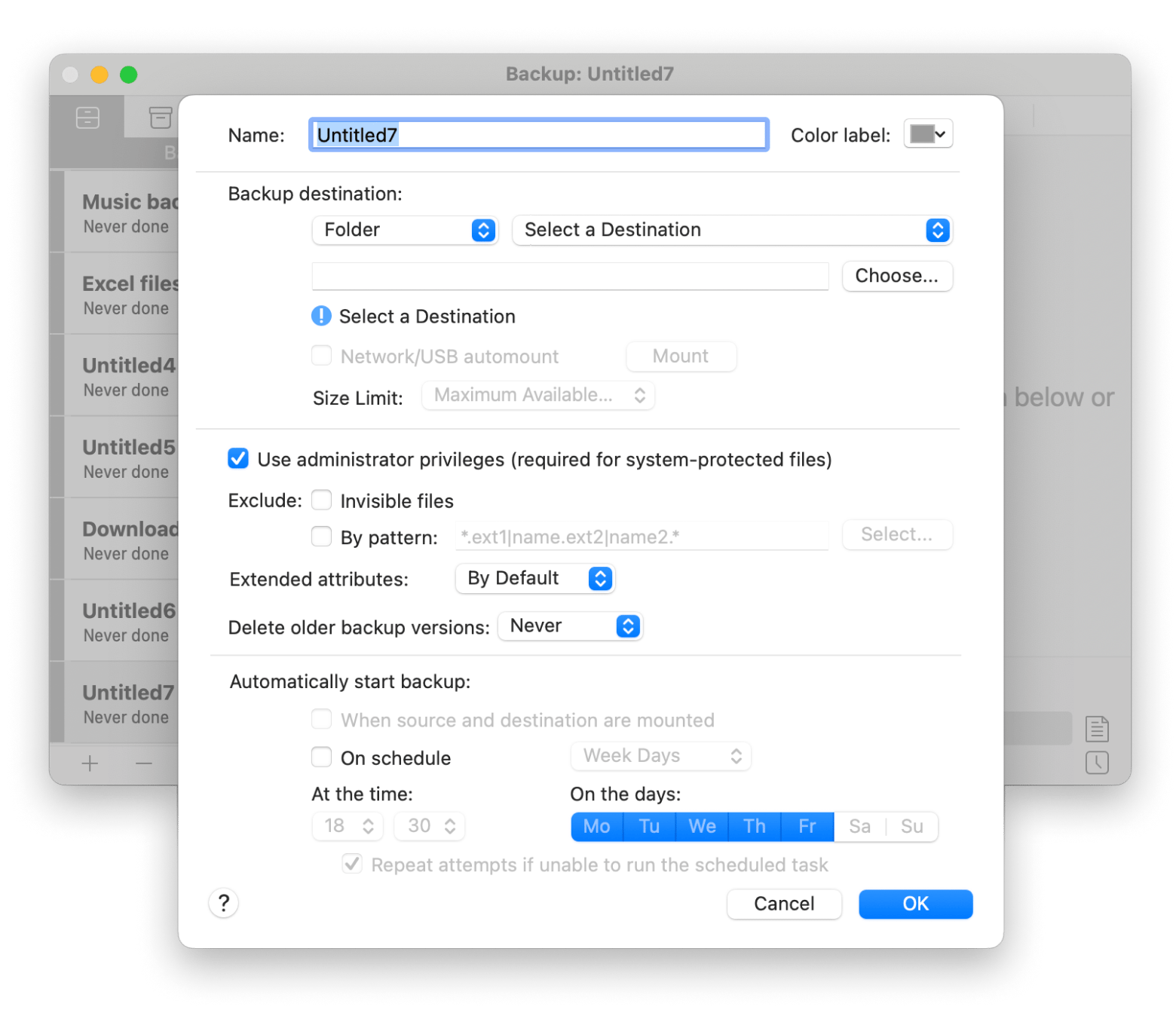How to uninstall Avast from Mac: My easy step guide for beginners
Avast is quite popular among Mac users, which is understandable considering it’s free and reliable. However, if you no longer need it or find out the app is slowing down your Mac, it’s good to uninstall it. Simply dragging the app to the bin won’t do it, though, as the antivirus leaves hidden files and various background processes behind.
In this guide, I’ll show you how to uninstall Avast on Mac using the built-in uninstaller and a more powerful third-party utility tool.
But before we get into the nitty-gritty, here’s a quick look at different solutions that can help you remove Avast:
| I want to | Do this |
| Uninstall Avast using the built-in uninstaller | Open Avast Security > Click Avast Security in the menu bar > Click Uninstall Avast Security > Follow the prompts. |
| Remove leftover Avast files manually | Open Finder > Go > Go to Folder > Enter paths (~/Library/Application Support/, ~/Library/Caches/, ~/Library/Preferences/). |
| Check for background processes after uninstalling | Use iStat Menus. |
| Completely uninstall Avast and leftover files | Open CleanMyMac and go to Applications. Then, click Manage My Applications, locate Avast, and click Uninstall. |
| Avast won’t uninstall | Restart your Mac and try again. |
| Force quit Avast processes | Open Activity Monitor and force-stop all Avast apps. |
| Avast processes won’t stop | Uninstall via safe mode. |
| Secure your data after uninstalling Avast | Back up your data through Get Backup Pro. |
Why you might want to uninstall Avast from Mac
While it’s a helpful program, you might not look far to get reasons why you might want to remove the app.
- Performance issues: Avast runs several background processes. These can eat up a huge chunk of your system resources and slow down your Mac.
- Switching to another antivirus: Maybe you prefer a different antivirus. Start by removing Avast to avoid conflict.
- Unwanted notifications: Avast is known for throwing pop-ups every now and then, so it can quickly get on your nerves.
- Reinstalling Avast: If Avast isn’t working well, a fresh installation can help resolve issues.
Whatever your reason, make sure you remove the program completely to avoid unnecessary background processes and leftover files.
How to uninstall Avast from Mac using Avast’s built-in uninstaller
Avast comes with a built-in uninstaller, and it’s the fastest way to remove the app from your Mac.
Step-by-step guide to using the Avast uninstaller
Here’s how to uninstall Avast on Mac using the built-in tool:
- Open the Avast Security app in Finder > Applications.
- Click Avast security in the menu bar.
- Choose Uninstall Avast Security.
- Enter your password, then click Install Helper.
- Enter your password, then click OK.
- Click Finish.
From there, just follow the uninstallation wizard.
Removing leftover files after uninstalling Avast
Even after using the Avast uninstaller, the program may still leave behind things like config files and hidden background processes. These don’t serve any purpose but may slow down your system, so it’s always good to ensure a program is gone completely.
How to locate leftover Avast files
Here’s how to locate leftover:
- Open Finder and click Go in the menu bar.
- Choose Go to Folder and enter the following paths one by one:
- ~/Library/Preferences/
- ~/Library/Caches/
- ~/Library/Application Support/
- Delete Avast-related folders. e.g., com.avast.*

Empty the Trash to complete the removal.
Clean up leftover files with iStat Menus
Antivirus programs like Avast free Mac security often leave behind hidden background processes, so it’s always good to monitor the different processes consuming your Mac’s system resources. iStat Menus helps me do this effectively, and you can use it to identify any background process that Avast may leave behind.
Simply install and open iStat Menus. Then, click on the CPU icon to see running processes. If you find any Avast-related processes, manually end them to free system resources.

Use CleanMyMac for complete uninstallation
The Avast uninstaller leaves behind configuration files that can be hard to locate, but you can use CleanMyMac to completely uninstall the app and clean up all Avast-related programs.
Here’s how to uninstall Avast Mac app via the app:
- Install and open CleanMyMac.
- Click Applications > Scan.
- After scan, click Manage My Applications.
- Locate Avast > Uninstall.
You can also use the app to find all the junk left by uninstalled apps:

Troubleshooting Avast uninstallation issues
Uninstalling Avast from your Mac should be pretty straightforward, but sometimes, things don’t go as planned. In my case, Avast’s uninstallation wizard would just tell me that the process wasn’t successful with no specific reason.
What to do if Avast won’t uninstall
Here are a few things that were helpful for me and can also help you get rid of the program completely.
Restart your Mac and try again
Sometimes, the background process can prevent you from uninstalling an antivirus. A simple restart can help solve this:
- Click the Apple Menu > Restart.
- Run the Avast uninstaller again.
Quit Avast processes manually
If you don’t want to restart your Mac, you can try stopping the background processes manually.
- Go Finder > Applications > Utilities > Activity Monitor.
- Click on any Avast process.
- Click the stop icon.
- Repeat for all Avast processes.
Once you’ve closed all Avast processes, try uninstalling again.
Use Terminal to force-remove Avast
You can remove Avast Mac app via Terminal. To do so:
- Go to Finder > Applications >Utilities > Terminal.
- Run the command sudo rm -rf /Applications/AvastCleanup.app.
- Enter your Mac’s password when prompted.
- Remove leftover files using the command sudo rm -rf ~/Library/Application\ Support/com.avast.cleanup
Restart Mac to see if Avast is completely removed.
Boot into safe mode
If Avast is still stubborn, boot your Mac into safe mode. This loads only essential system files, so it will help bypass Avast’s background processes.
Here’s the complete guide on recovery mode for Intel-based and Apple silicon Macs
Additional tips for securing your Mac after uninstalling Avast
After uninstalling Avast, you need to ensure that your data remains secure. Below are two ways you can do that.
Backup your files with Get Backup Pro
Regular backups are a critical part of data security as they ensure you can always recover files after malware attacks, system crashes, or accidental deletion. Get Backup Pro makes it easy to secure your files as it allows you to backup specific files or your entire disk. It even has incremental backup and cloning options.
To back up:
- Install and open Get Backup Pro.
- Click the add “+” button to create a new project.
- Customize the backup strategy and click OK.

Protect your Wi-Fi with WiFi explorer
If you were relying on Avast to monitor your network activity and detect any suspicious connections, you might want an alternative tool to analyze and secure your Wi-Fi. I recommend WiFi Explorer, a powerful tool that does a detailed analysis of any network environment and presents it in a simple and customizable interface.
Once you do a simple scan that takes seconds, you’ll have a graphical view of the networks around you, with important details like signal strength, noise levels, and channel usage. In case your Wi-Fi starts acting up or seems vulnerable, you can use this data to troubleshoot and switch to a more secure setup.

Also, check out how to secure your Wi-Fi network from any threats.
Wrapping up: How to uninstall Avast on Mac completely
It’s easy to uninstall the Avast Mac app, as the antivirus even offers a utility tool for that purpose. However, using this method often leaves behind files that will clutter your system and may eventually start slowing down your Mac.
To avoid this, I suggest you uninstall the app using CleanMyMac, as the tool also cleans up all leftover files. To confirm that you don’t have any leftover background processes, you can check everything that’s consuming your resources through iStat Menus.
Once Avast is gone, don’t forget to take extra steps to secure your data. Get Backup Pro will ensure your important files are always safe, while Wi-Fi Explorer will help monitor and troubleshoot any network issues that may arise. All these apps are available on Setapp, a platform that curates the best Mac apps and provides them under a single subscription. You can check them out through Setapp’s 7-day free trial.
FAQ
Why can’t I uninstall Avast from my Mac?
You can’t uninstall Avast from your Mac because the app may still be running in the background if that’s the case, and quit all its processes through Activity Monitor. If they can’t seem to quit, use safe mode to uninstall it.
How do I know if Avast is completely removed?
After you’ve removed the app, check for leftover files in ~/Library/Application Support/ and ~/Library/Preferences/. You can then use iStat Menus to see if there are leftover background processes and CleanMyMac to remove any remaining Avast-related files.
What happens if I delete Avast without using the uninstaller?
Deleting Avast without using the uninstaller depends on the method you use. If it’s the manual one that involves deleting the app from the applications folder, Avast will leave lots of files and background processes behind. The best alternative is to use CleanMyMac as it also scans for leftover files.






